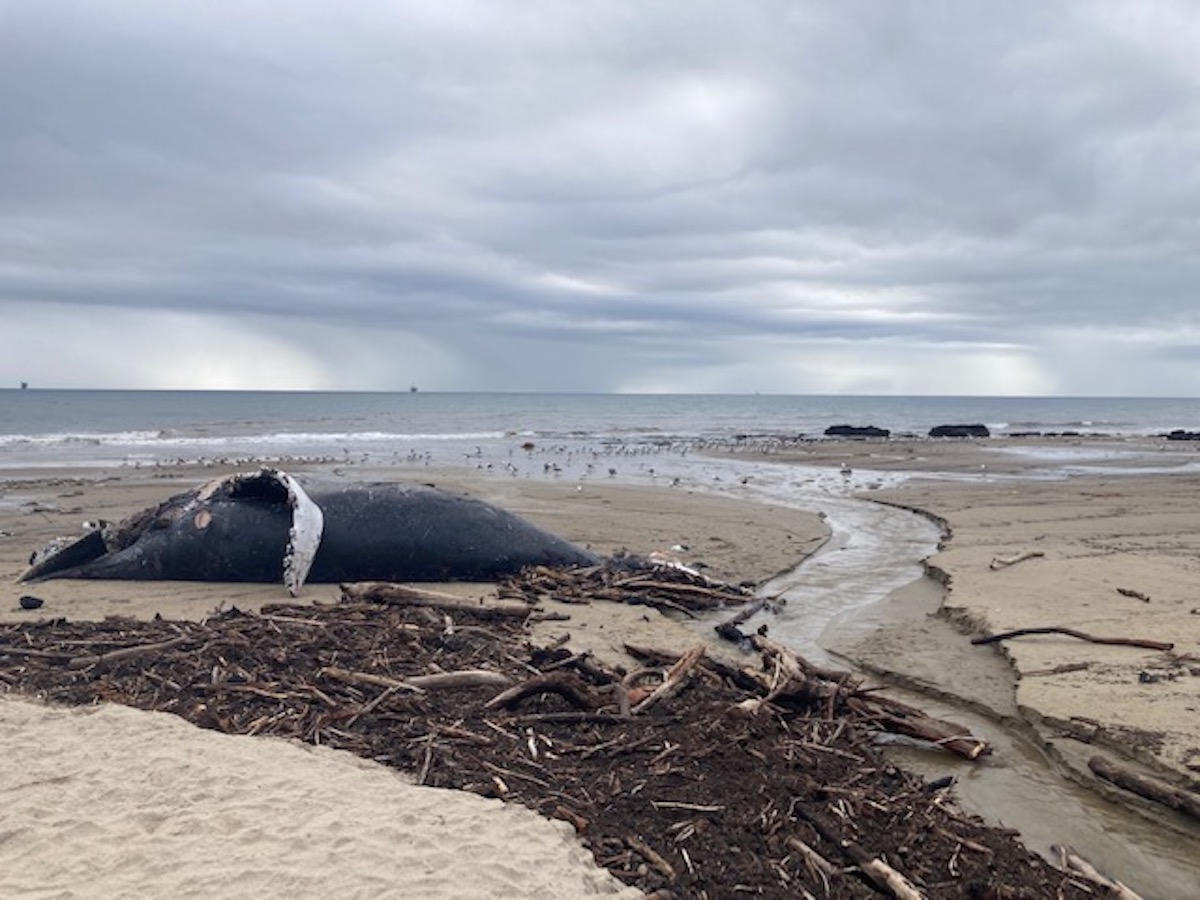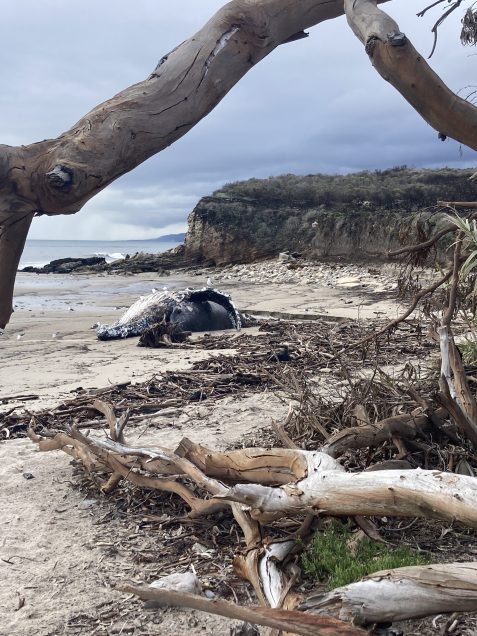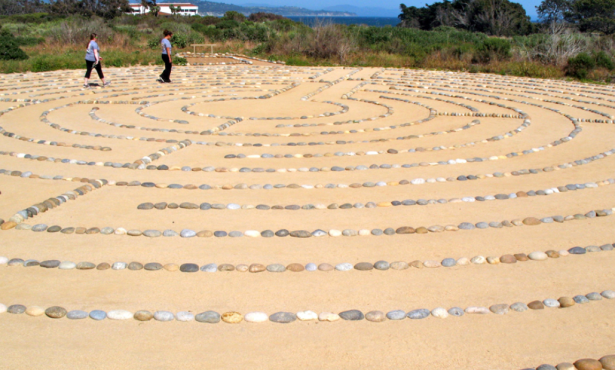Humpback Whale Washes Ashore Along Tajiguas Beach
Rare Sight Could Help Researchers Studying Cetacean Mammals in Santa Barbara Channel

Locals taking an early-morning oceanside walk at Tajiguas Beach last week were in for a huge surprise when they found a 44-foot-long humpback whale washed up onto the sand.
Kevin Loughran, a resident who has lived in the area for nearly 30 years, takes a walk along the beach every day; shortly after sunrise, he received a call from a friend who had seen the whale. “I went down to see what was going on, and there she was,” he said.
Loughran said this was the first time he had seen a whale washed up in the area, though it was more common to see smaller animals like seals and pelicans or, even more commonly, abandoned panga boats.
The whale — a young female humpback —had washed up during the morning high tide on New Year’s Eve, and Loughran said he wanted to make sure the proper authorities knew about it. He contacted the Channel Islands Cetacean Research Unit, which studies abandoned or stranded whales, dolphins, and porpoises in the Santa Barbara Channel.

Diane Alps, the Large Whale Stranding Coordinator for the research unit, arrived early the next day with her team to take measurements and tissue samples in order to determine potential factors leading to the whale’s death. There have been only a handful of cases of beached whales in the past few years in Ventura, Santa Barbara, and San Luis Obispo counties, she said. The last humpback whale she could recall was in August near Jalama Beach.
“As heartbreaking as it is, it’s rare,” she said. In her work, she says, the opportunity to study whales in the area is invaluable, and the research unit takes care to make sure the mammal’s death can provide some insight into their lifestyle. “It provides an immense amount of information,” Alps said.
It is too early to know the cause of death, Alps said, but the research unit was able to determine the whale was a 3-4-year-old female humpback, “young” but not juvenile, and almost fully mature at 44 feet long. “We could see no obvious signs of trauma,” Alps said. She added that all organ and tissue samples seemed healthy at this point, and there were no signs of ingesting any foreign substances related to an oil slick in the area.
It was particularly noteworthy that humpback whales were sticking around longer in recent years, she said, as they typically are further down south near Central Mexico and Costa Rica during this time of year. Whale-watching tours and others have noted seeing humpbacks in the area in addition to the more common sightings of blue and gray whales in the summer months. “These humpback whales are sticking around longer,” she said.
Depending on the location, beached whales can either be left in place to decompose naturally, or sometimes donated to museums or other research institutions. Since Tajiguas is a state-owned beach, Alps said they prefer it be left alone, creating a “nutrient-rich environment” for the natural habitat. This process could take weeks, depending on the time of year and level of decomposition. In this case, the cold weather serves as a sort of refrigeration, though Alps said it would look noticeably different just a week from now.
She cautioned against approaching or touching the carcass in any way. Removing any tissue or bones, she said, is a federal offense that could result in jail time. “People should be aware and keep their distance,” Alps said. “We don’t know if there is something toxic.”
Support the Santa Barbara Independent through a long-term or a single contribution.




You must be logged in to post a comment.